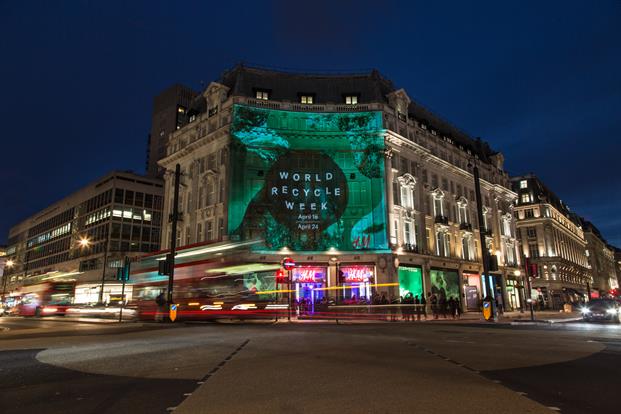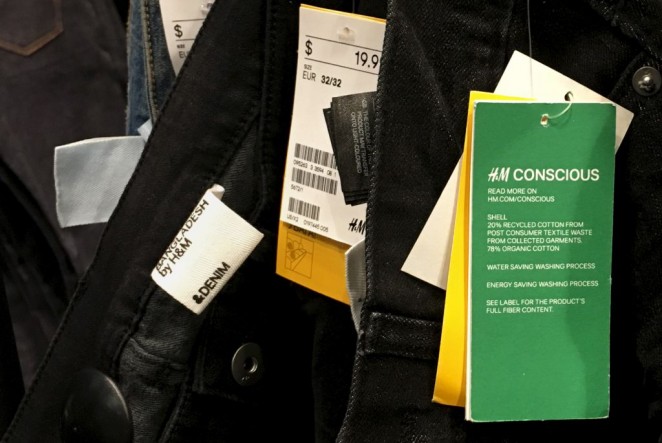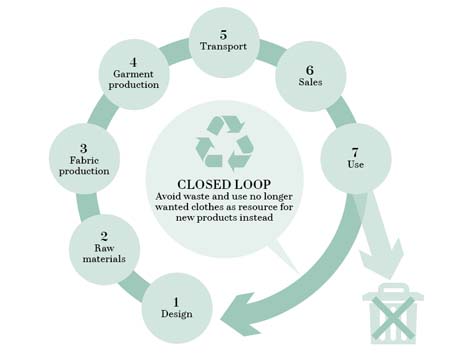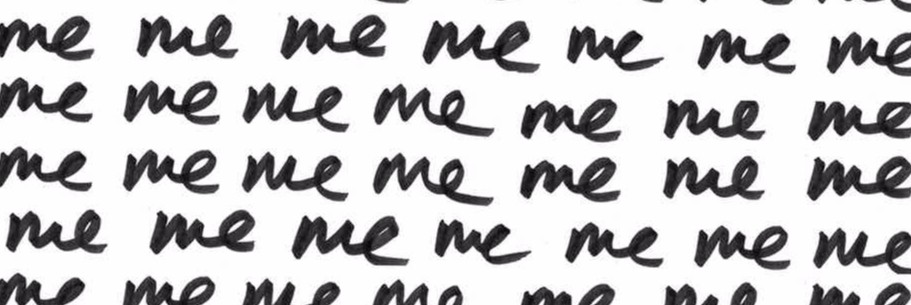Back in April, H&M hosted World Recycle Week, an initiative designed to promote sustainability in fashion and to ‘Close The Loop’ on the thousands of items of clothing that are cast aside on landfill every year. But whilst the campaign may have initially seemed like a wholesome and powerful way to affect change, in its aftermath many have argued that the brand’s intentions were anything but.

According to Anna Gedda, H&M’s Head of Sustainability, the brand has been at the forefront of sustainability for years. In 2013 it launched its Garment Collecting Initiative, through which customers have helped recycle 25,000 tons of unworn clothes. Unwanted items are collected in more than 3,600 H&M stores worldwide, and then shipped to one of seven sorting plants where they begin their journey to become either re-worn and sold in second-hand stores, re-used as cloth or upholstery, or recycled to become a new fabric. To make that gigantic volume more comprehendible, Gedda compares it to collecting 125 million T-shirts in three years.

A huge effort of World Recycle Week, was to collect another 1000 tons of recycled fashion in just seven days. But alongside this came a call out to fashion brands to create ‘A Closed Loop’ within fashion, in which old clothes can be turned into new ones without using additional materials. Closed-loop products are already available at H&M and include recycled denim fabrics taken from jeans collected at the Garment Collecting initiative.

To grab the fashion world’s attention, and to make as many people as possible aware of World Recycle Week, H&M teamed up with the notoriously politically active singer M.I.A., as well as other key influencers to spread the #REWEARIT #REWORKIT message.
And so why has there been such a backlash? Well to start with Quartz reported on how the biggest strike against H&M is :
“the giant pile of clothing it produces every day. The Swedish retailer is one of the largest fashion brands in the world in terms of sales volume. It’s staggering to consider: The quantity of cheap t-shirts, jeans, dresses, jackets, and everything else it produced and sold reached about $25 billion in global sales in 2015. To grow the materials, dye and finish them with chemicals, manufacture, and ship all those clothes puts a tremendous strain on the environment and consumes vast resources. That volume is the primary sustainability challenge H&M faces, and it knows it.”

The Guardian then pointed out a fundamental flaw in World Recycle Week’s ambition. Whilst it may strive to collect 1,000 tons of clothing waste;
“given the limitations of current technology, it would likely take H&M up to 12 years to use 1,000 tons. Meanwhile, it produces that same volume of new clothes in a matter of days.”
But perhaps most critical to the campaign’s hypocrisy, is H&M’s historically dubious treatment of underpaid workers. High Snobiety explained to us how;
“less than six months ago, the Clean Clothes Campaign published a report accusing the company of being way behind in their promise – made after the Rana Plaza building collapse – to improve working conditions in their factories in Bangladesh. A Human Rights Watch study last year noticed similar problems in Cambodia, another country H&M uses extensively for its cheap labor. On top of that, accusations of using child labor are still here to this day, even if the company does report to make some effort to banish the custom.”

And so, whilst H&M’s star-fronted campaign may have set out to bring about a revolution of sorts, all it ultimately managed to do was highlight it’s own shortcomings in sustainability and ethical practice. Eek, a tip from us guys: #REWORKIT.



